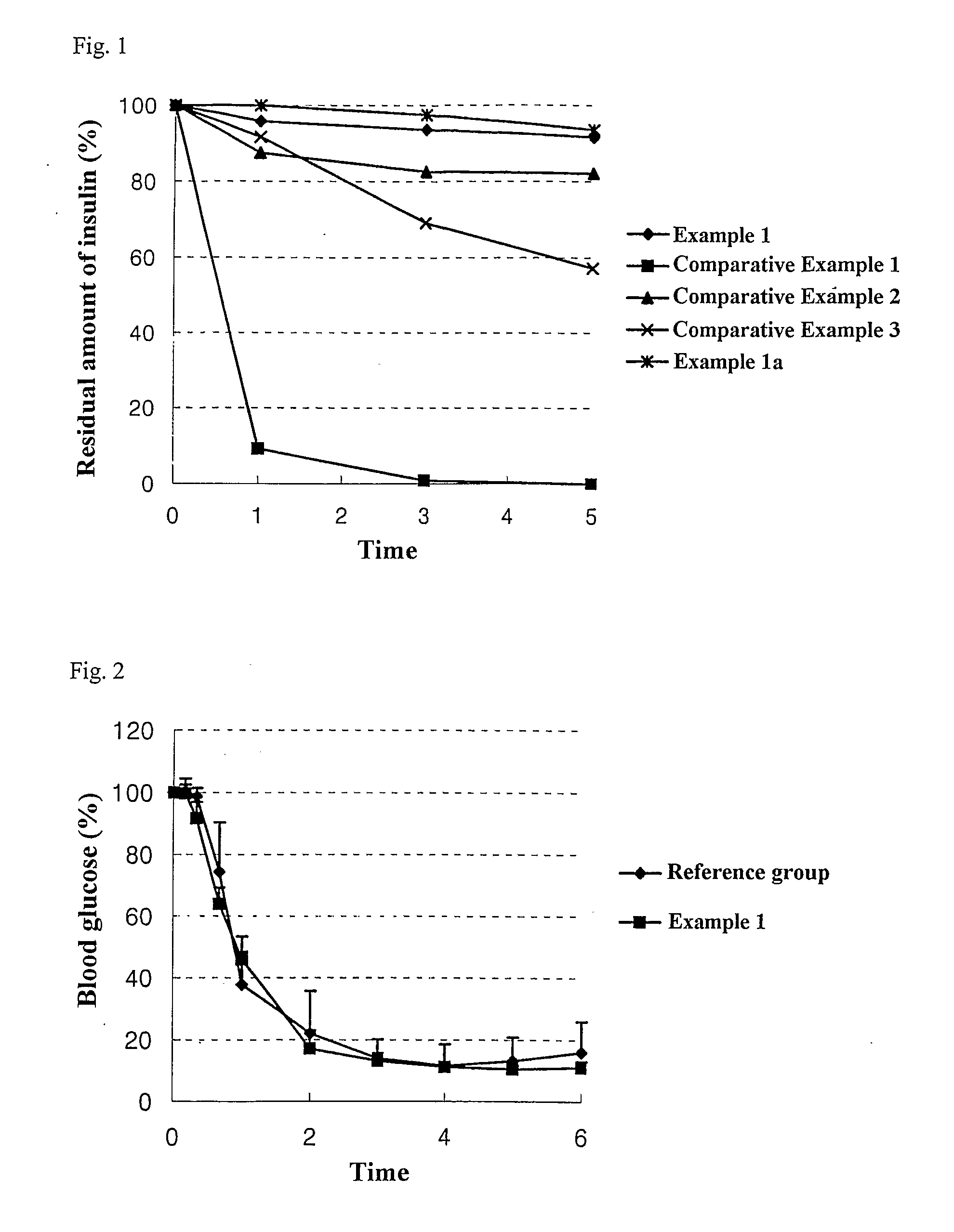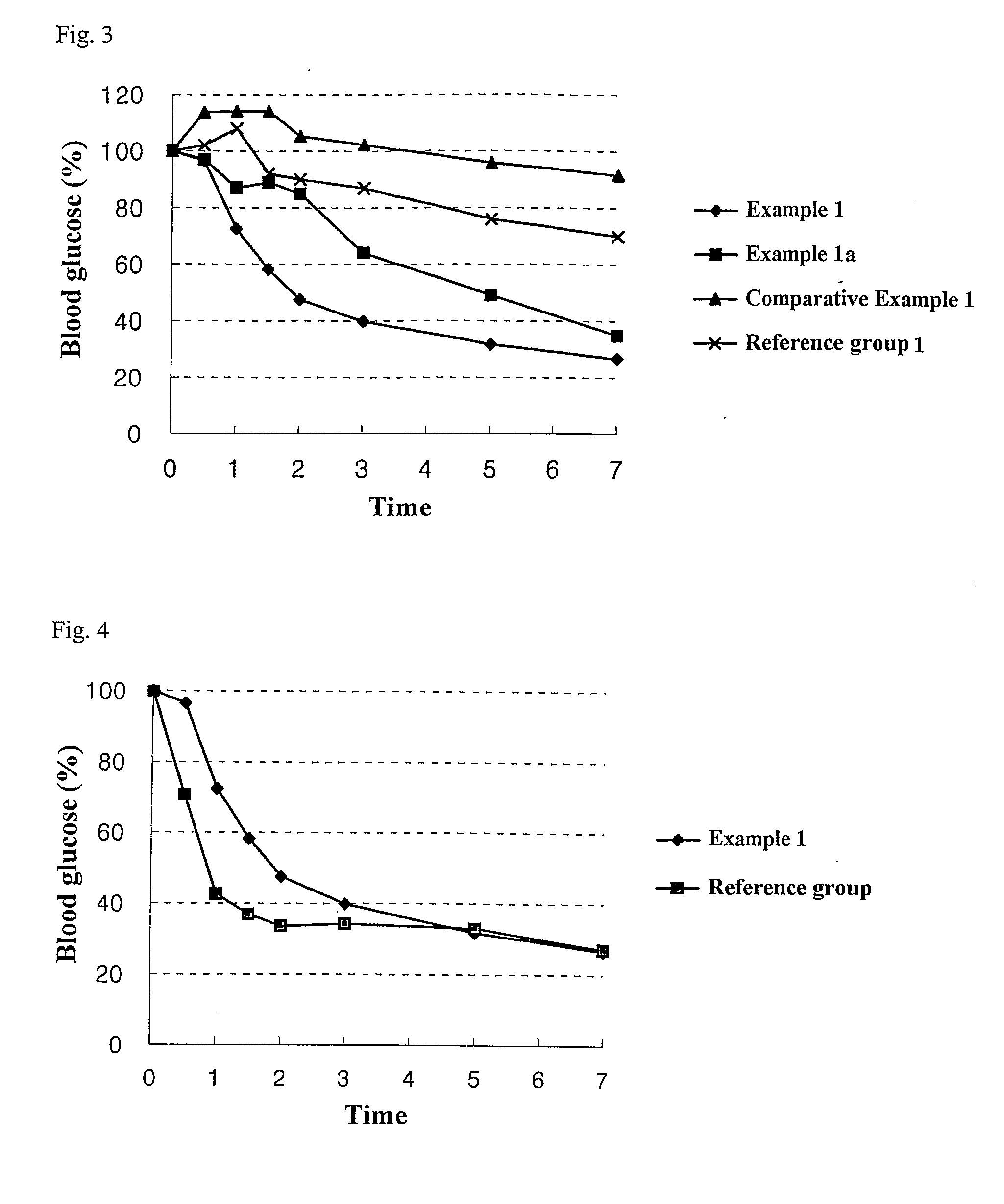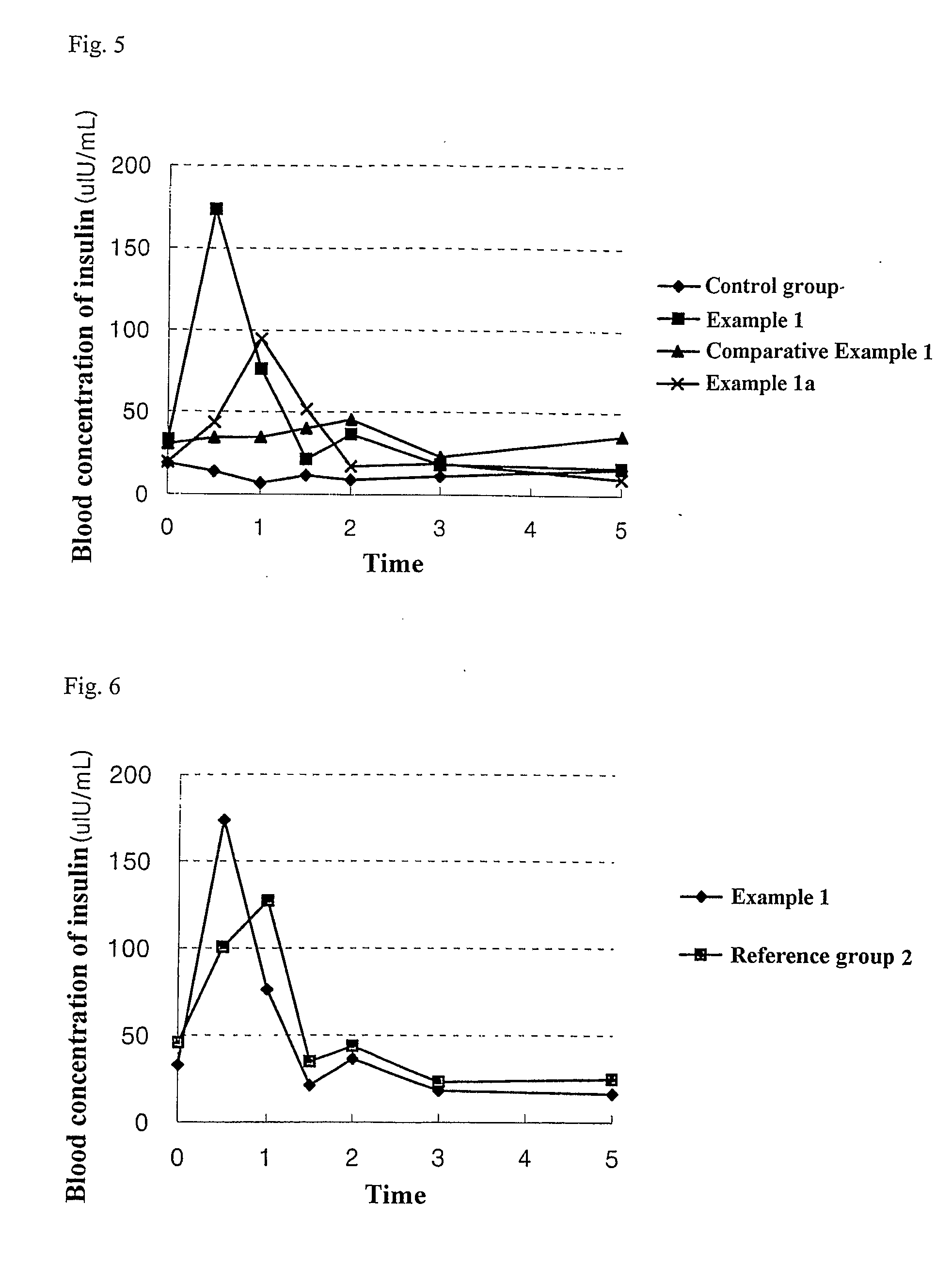Nanoparticle compositions of water-soluble drugs for oral administration and preparation methods thereof
a technology of nanoparticles and water-soluble drugs, which is applied in the direction of peptide/protein ingredients, oil/fat/waxes non-active ingredients, powder delivery, etc., can solve the problems of insufficient expression of desired pharmacological effects upon oral administration, inconvenient intravenous injection for most patients in daily life, and most or some parts of administered drugs. to play their role, enhance drug entrapment rate and resistance to lipases in vivo, and increase the effect o
- Summary
- Abstract
- Description
- Claims
- Application Information
AI Technical Summary
Benefits of technology
Problems solved by technology
Method used
Image
Examples
example 1
Preparation of an Orally Administrable Nanoparticle Composition Containing Insulin
[0086] (1) Preparation of a Complex of Insulin and a Counter-Ion Substance
[0087] 50 mg of Insulin (Sigma) was dissolved in 20 ml of citrate buffer of pH 3, and sodium docusate (Aldrich) dissolved in 80 ml of pH 3 citrate buffer was reacted therewith at the molar ratios of 1:3, 1:6 and 1:9 to 1 mole of insulin, to obtain a complex of insulin and the counter-ion substance. Upon completing the reaction, insulin in the supernatant was analyzed according the insulin analysis method described in the US Pharmacopoeia, to obtain results as shown in the following Table 1.
TABLE 1Reaction ratio of the complex of insulinand the counter-ion substanceMolar ratio of insulin:sodium docusateResidual reactant in supernatant1:320.7%1:60%1:90%
[0088] As shown in the above Table 1, most of the insulin formed the complex with the counter-ion substance when the molar ratio of insulin and sodium docusate was 1:6 or more. T...
example 1a
[0096] The liquid composition was prepared according to the same method as Example 1 except that the microfluidizer was not used. As a result of measuring the particle size and degree of dispersion according to the method of Example 1, the mean particle size was 234.3 nm, and the degree of dispersion was 0.291.
example 2
Preparation of an Orally Administrable Nanoparticle Powder Formulation Containing Insulin
[0097] In solidifying the orally administrable nanoparticle liquid formulation obtained from Example 1, increase of the nanoparticle size was minimized by adding 5% of mannitol to the orally administrable nanoparticle liquid formulation, and then, the liquid formulation was solidified under different lyophilization conditions, and dispersed in water to measure the particle size. The results are shown in the following Table 2.
TABLE 2Increasing rate ofBeforeAfterparticle sizelyophilizinglyophilizingbefore and afterLyophilizing condition(nm)(nm)lyophilizingCondition IRoom temperature, 4868.1339.85.0hrsCondition II0° C.: 12 hrs → 0° C.: 882.5188.52.3hrs → 5° C.: 24 hrsCondition III−25° C.: 24 hrs → 0 ° C.:118.1196.41.724 hrs
[0098] As shown in the above Table 2, lyophilizing under the condition of <0° C. is preferable for minimizing the variation in the particle size.
[0099] To the orally administ...
PUM
| Property | Measurement | Unit |
|---|---|---|
| weight % | aaaaa | aaaaa |
| weight % | aaaaa | aaaaa |
| particle size | aaaaa | aaaaa |
Abstract
Description
Claims
Application Information
 Login to View More
Login to View More - R&D
- Intellectual Property
- Life Sciences
- Materials
- Tech Scout
- Unparalleled Data Quality
- Higher Quality Content
- 60% Fewer Hallucinations
Browse by: Latest US Patents, China's latest patents, Technical Efficacy Thesaurus, Application Domain, Technology Topic, Popular Technical Reports.
© 2025 PatSnap. All rights reserved.Legal|Privacy policy|Modern Slavery Act Transparency Statement|Sitemap|About US| Contact US: help@patsnap.com



